Welcome to “12 Dreamy Feng Shui Tips For Home Interiors,” a guide designed to infuse your living spaces with harmony and positive energy. Whether you’re just dipping your toes into the world of home styling or you’re a seasoned decorator looking for fresh inspiration, these tips are tailored to elevate your interior design game, bringing joy and balance into your home.
Imagine the thrill of transforming your space into a harmonious sanctuary where every corner radiates tranquility and purpose. This collection of Feng Shui insights offers practical techniques that not only enhance the beauty of your environment but also promote well-being and prosperity for everyone who steps through your door.
By weaving these principles into your decor, you’ll discover the profound effect that intentional design can have on your everyday life. So, let’s embark on this exciting journey together and unlock the secrets of Feng Shui, empowering you to create a home that truly reflects your dreams and aspirations.
Clear Clutter for Energy Flow
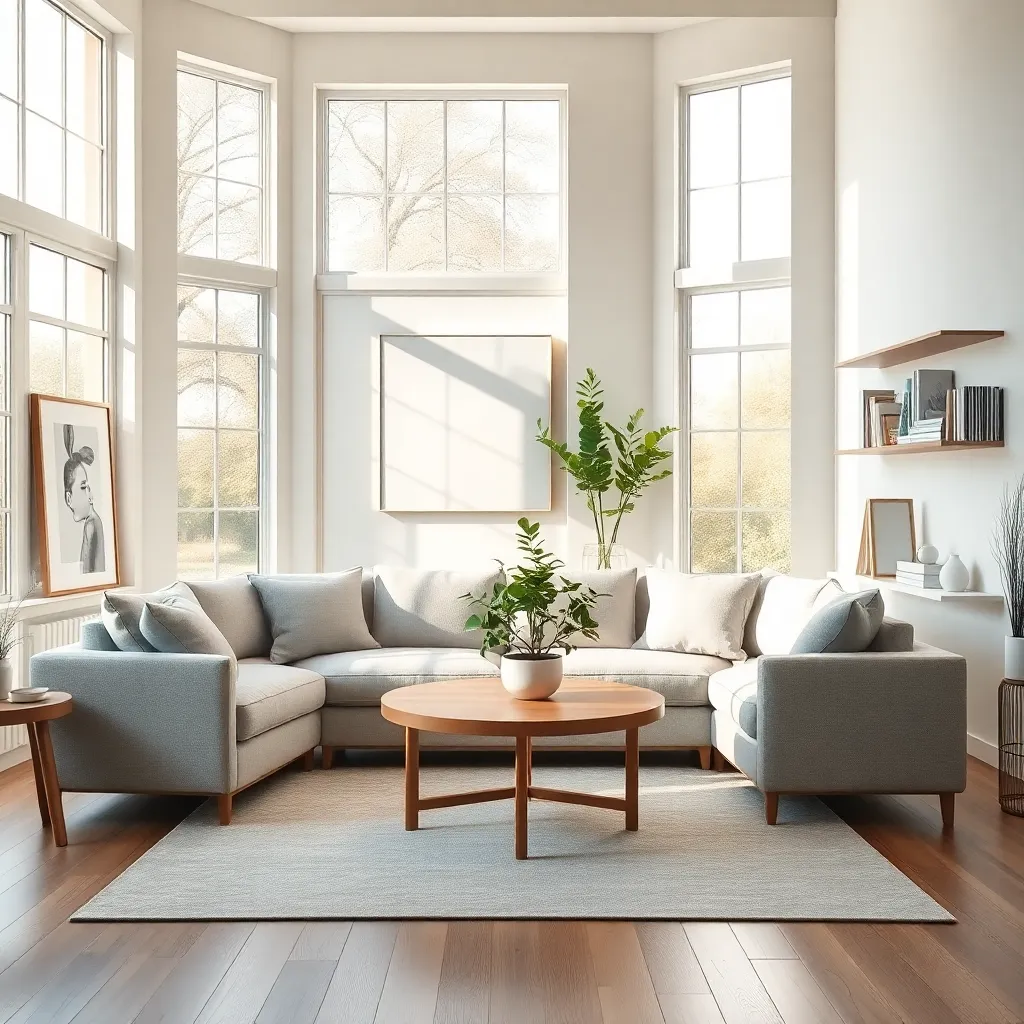
Creating a harmonious flow of energy in your home starts with eliminating clutter. Begin by sorting through items and letting go of those that no longer serve a purpose, which will open up your space and mind for new energy to enter.
One effective technique is to focus on one room at a time, aiming to achieve a balance of functionality and aesthetics. In living areas, opt for furniture pieces with clean lines and neutral colors, like a sleek, beige sofa or a light oak coffee table, to encourage a sense of calm and openness.
For a more advanced approach, consider placing mirrors strategically to reflect and expand light, enhancing the energy flow across rooms. Use mirrors with minimal frames in areas like the dining room or hallway, where they can brighten the space and create an illusion of depth.
Lastly, integrate storage solutions that complement your decor while keeping spaces tidy. Choose multi-functional furniture, such as ottomans with hidden compartments or wall-mounted shelves, to maintain a clutter-free environment without sacrificing style.
Position Furniture for Harmony
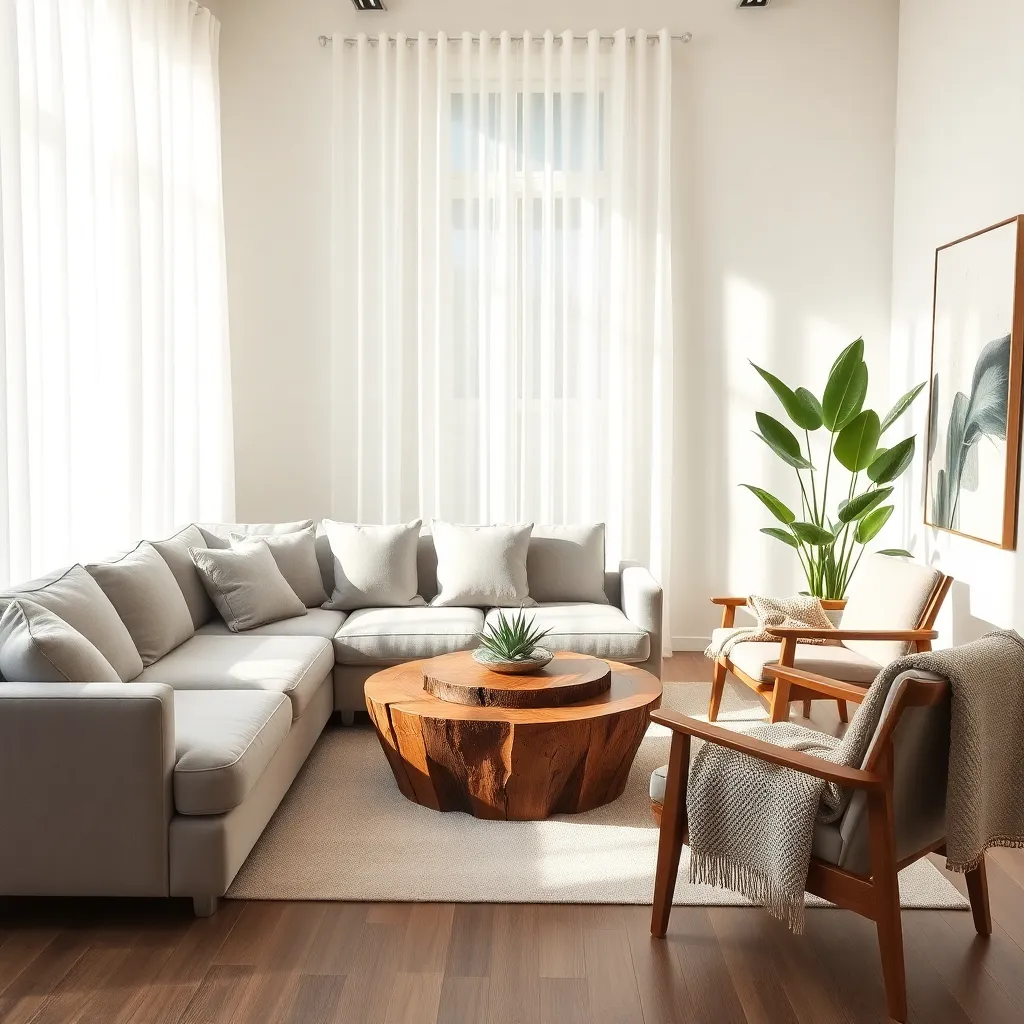
Arranging furniture to promote harmony in your living space is a cornerstone of Feng Shui. Begin by ensuring that your furniture pieces are in proportion to the room; oversized furniture can disrupt energy flow, while too-small pieces may feel insignificant.
Consider the function of each room and place furniture accordingly. In a living room, for example, position the sofa against a solid wall to provide a sense of support and stability, allowing energy to circulate freely.
Keep pathways clear to allow for unobstructed movement, which is crucial for maintaining a balanced energy flow. Avoid blocking windows with large furniture, as natural light is essential for positive energy and enhancing the room’s vitality.
For a harmonious color scheme, choose colors that complement the room’s purpose and enhance its atmosphere. In the bedroom, opt for calming hues such as soft blues and warm neutrals to promote relaxation and restful sleep.
Advanced decorators might experiment with the Bagua map to align furniture with specific life areas, such as health or wealth. By aligning your furniture with these principles, you can create a space that not only looks beautiful but also supports your well-being.
Balance Elements in Each Room
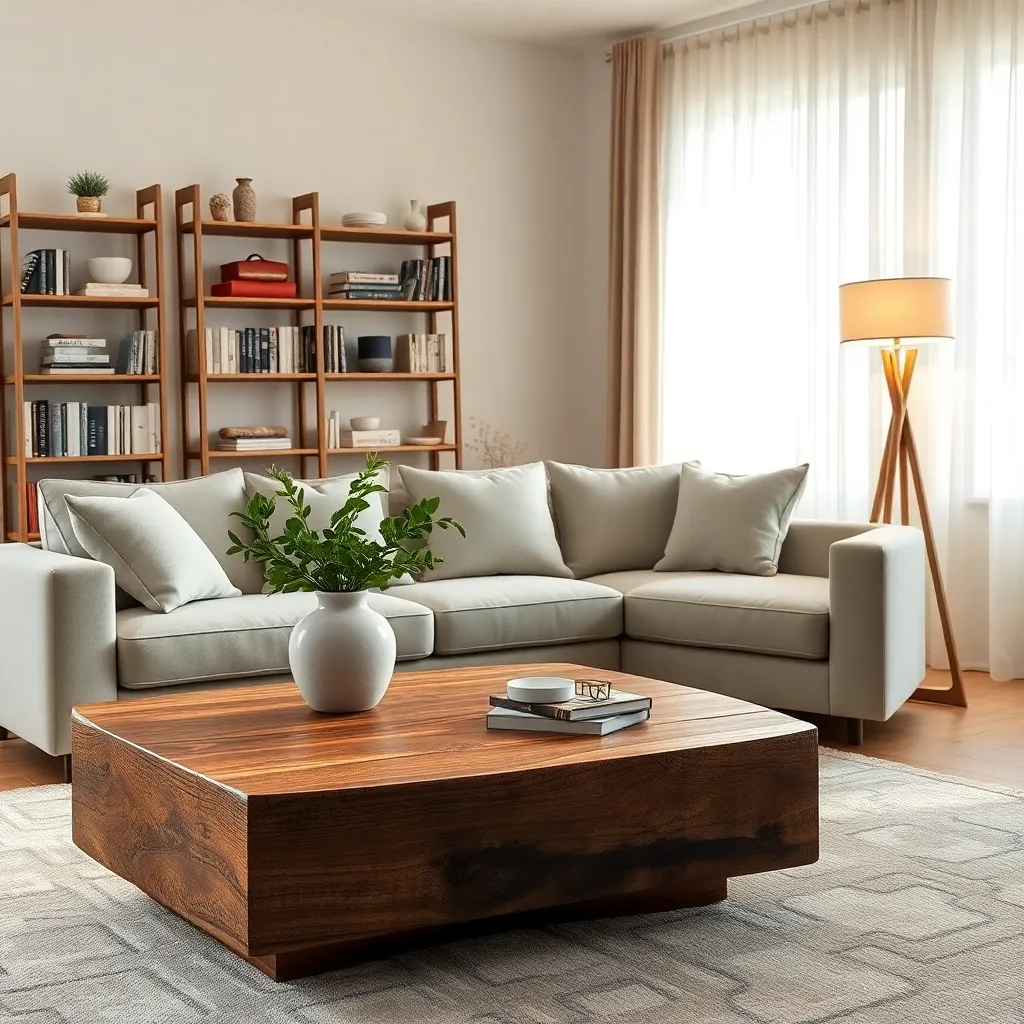
Achieving a sense of balance in each room is essential for a harmonious home environment. Begin by evaluating the dominant features of your space, such as large furniture pieces or striking architectural elements, and ensure these are complemented with smaller, supportive items.
Consider the distribution of colors and textures across your room. Balance bold colors with neutrals, and mix different textures, such as a plush rug with a sleek, wooden coffee table, to create visual interest and equilibrium.
Incorporate the five elements of Feng Shui—wood, fire, earth, metal, and water—to achieve balance. For example, introduce wooden elements through furniture, add metal in light fixtures, and use water features or blue accents for a calming effect.
When arranging furniture, aim to distribute weight visually. If one side of the room feels too heavy because of a large sofa or bookshelf, balance it with tall plants or artwork on the opposite side to create a cohesive look.
Incorporate Natural Light Sources
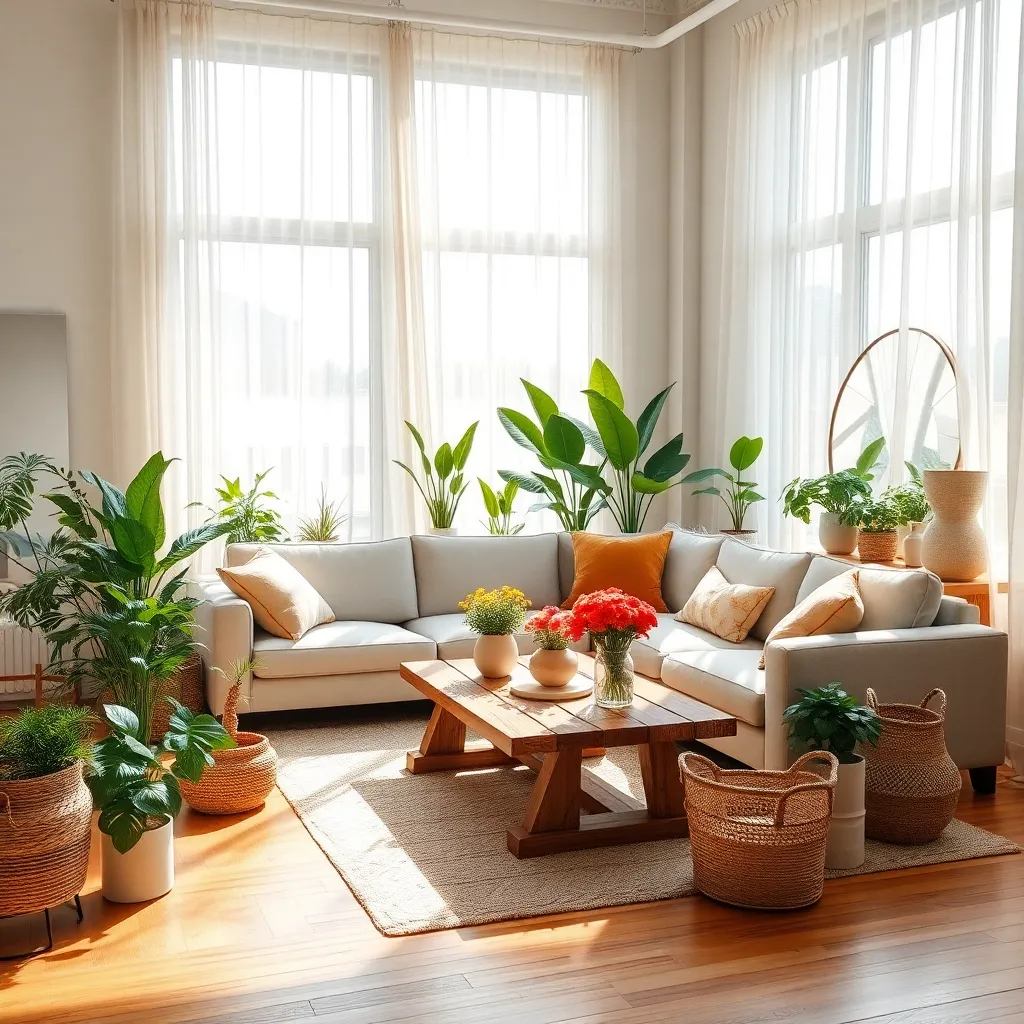
Natural light is a powerful ally in Feng Shui, bringing vitality and energy into your home. To maximize the benefits, start by using light, sheer curtains or blinds that allow sunlight to filter through while maintaining privacy.
Consider the placement of mirrors to amplify natural light throughout your space. Position them strategically opposite windows to reflect light deeper into rooms, effectively brightening even the darkest corners.
For those with limited window space, opt for glass doors or walls where possible to increase the flow of light. This not only enhances illumination but also creates a seamless transition between indoor and outdoor spaces, promoting a sense of openness.
Advanced decorators might explore using light tubes or skylights to introduce more sunlight into areas that are otherwise hard to illuminate. These features can be particularly effective in rooms like bathrooms or hallways, where natural light is often lacking.
Use Calming Color Palettes
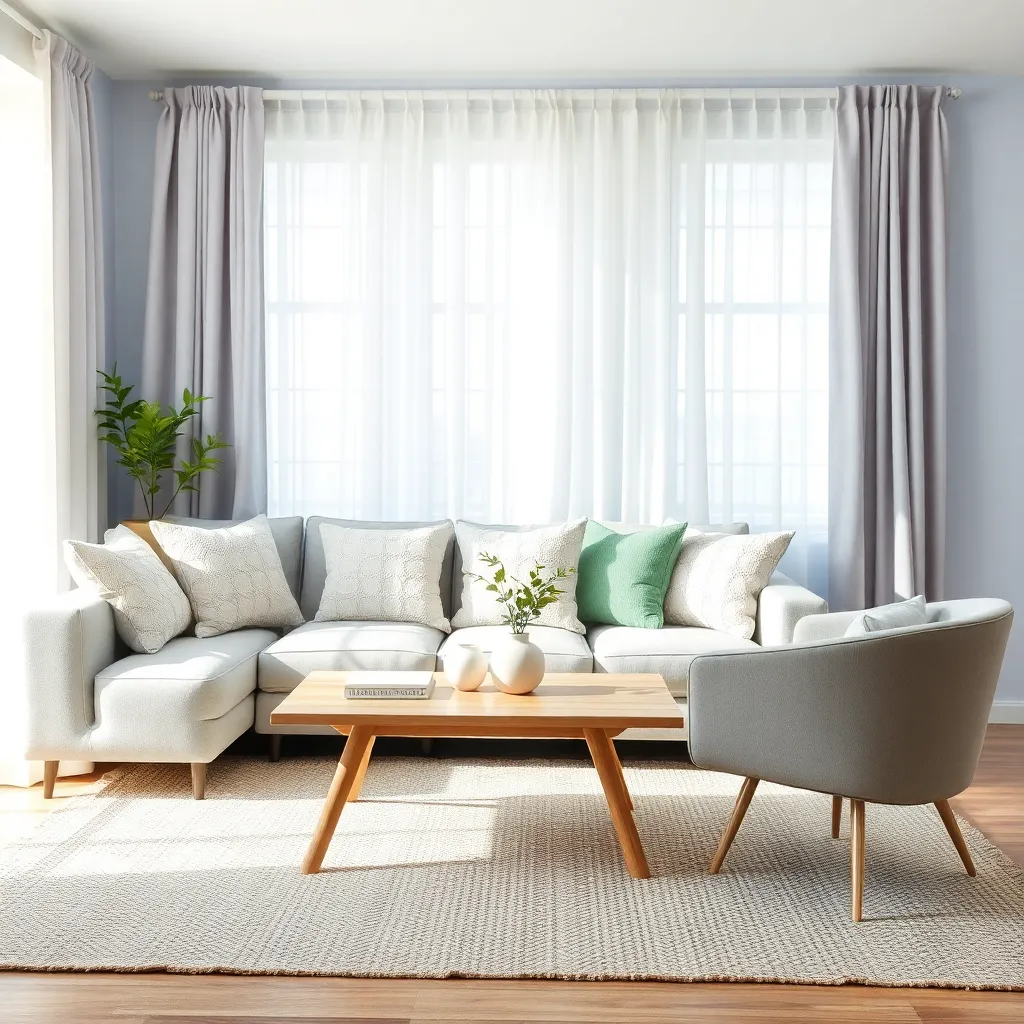
Choosing a calming color palette is essential for creating a serene and harmonious environment in your home. Start with soft, neutral tones like beiges, soft grays, and muted pastels to establish a tranquil base.
When selecting furniture, opt for pieces that complement these soothing hues. Consider materials like light wood or wicker to enhance the natural, peaceful vibe in your space.
For those ready to explore advanced techniques, try incorporating a monochromatic color scheme. This involves using different shades of the same color to add depth and interest without overwhelming the room.
Accessorize with textiles in calming colors, such as light blue or sage green, to bring a restful energy into bedrooms or living areas. Soft furnishings like throw pillows and curtains can be easily updated to reflect your chosen palette, making seasonal refreshes simple.
Enhance Entryway with Plants
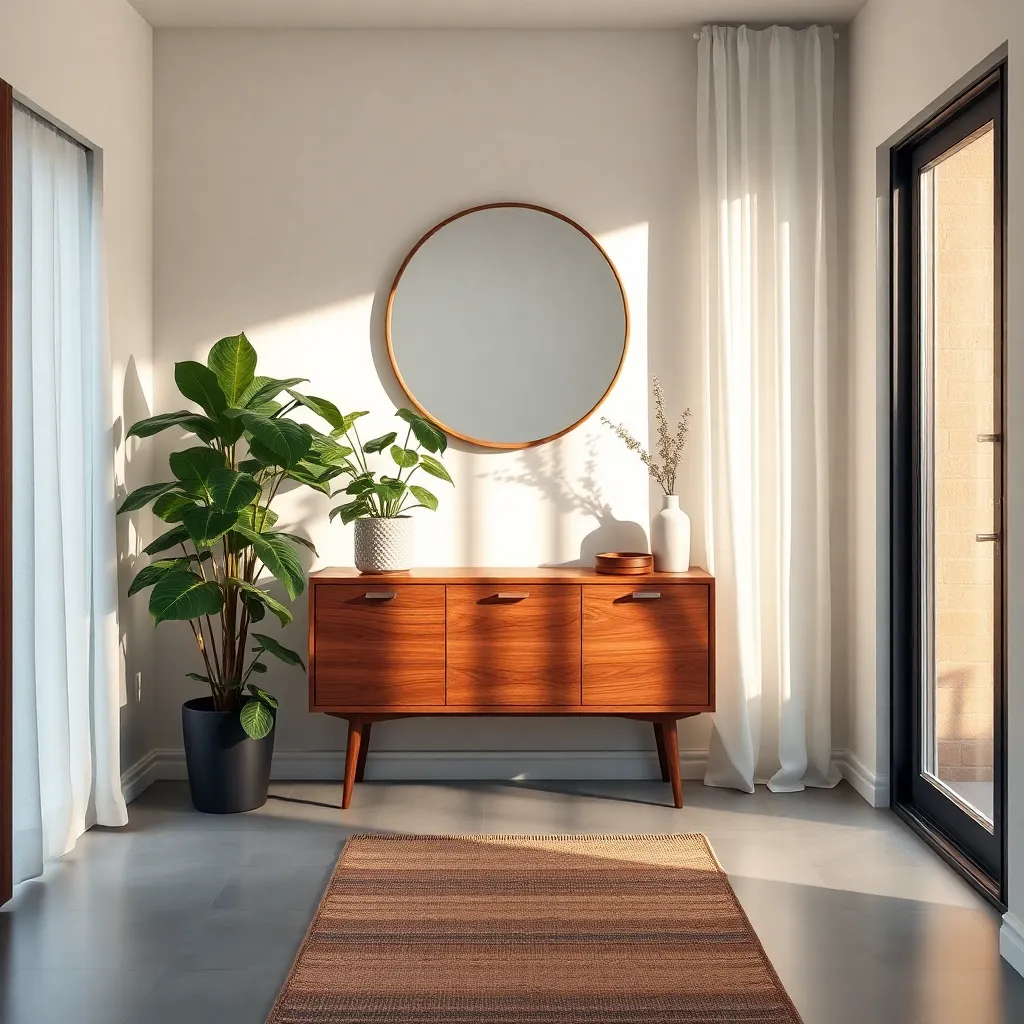
Incorporating plants into your entryway can significantly enhance the Feng Shui of your home. Choose plants like the Lucky Bamboo or Peace Lily, which are known for their positive energy and air-purifying qualities.
Position your plants strategically to ensure they receive enough light, which is vital for their growth. If your entryway lacks natural light, consider using artificial grow lights to maintain the health of your plants year-round.
For smaller entryways, opt for vertical plant arrangements or hanging planters to conserve space. This not only saves room but also draws the eye upward, creating a sense of height and openness in your entryway.
To add a touch of elegance, consider using decorative pots that complement your entryway’s existing color palette. Ceramic or terracotta pots in neutral tones can enhance the overall aesthetic while keeping the look cohesive and polished.
Place Mirrors to Expand Space
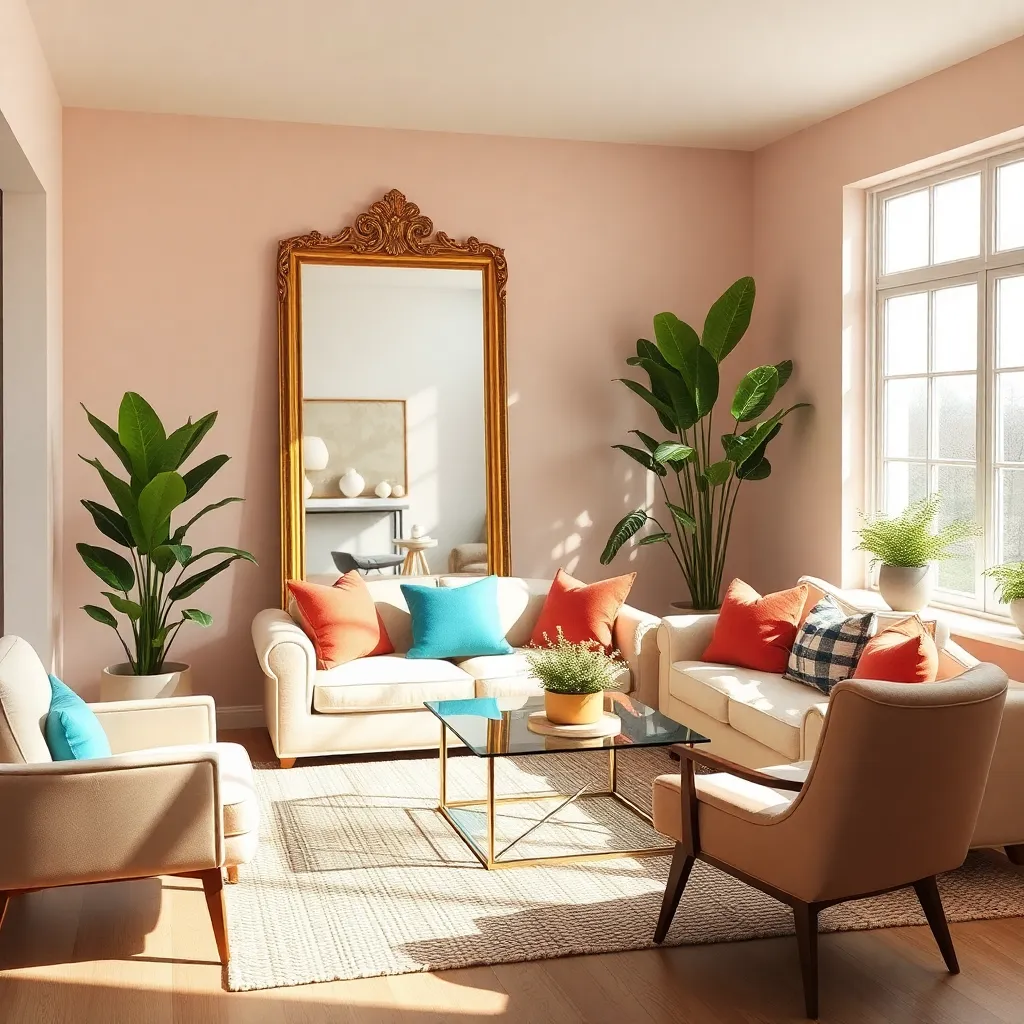
Mirrors are versatile tools in interior design, offering an effective way to create the illusion of more space. To maximize their impact, place a large mirror opposite a window to reflect natural light and brighten the entire room.
Consider using mirrors with decorative frames to add a touch of elegance and style to your decor. For beginners, a simple round or oval mirror can soften a room’s edges, while advanced decorators might experiment with geometric or uniquely shaped mirrors for added visual interest.
Strategically position mirrors in narrow hallways to make them appear wider, or behind furniture pieces to add depth to small spaces. For a cohesive look, match the mirror frame with existing furniture finishes or the room’s color scheme, like pairing a gold frame with warm-toned furnishings.
Incorporate mirrors in unexpected places, such as behind shelves or within gallery walls, to enhance dimensionality and intrigue. Additionally, using multiple small mirrors in a cluster can create a dynamic focal point, offering a playful alternative to a single large piece.
Integrate Water Features Mindfully
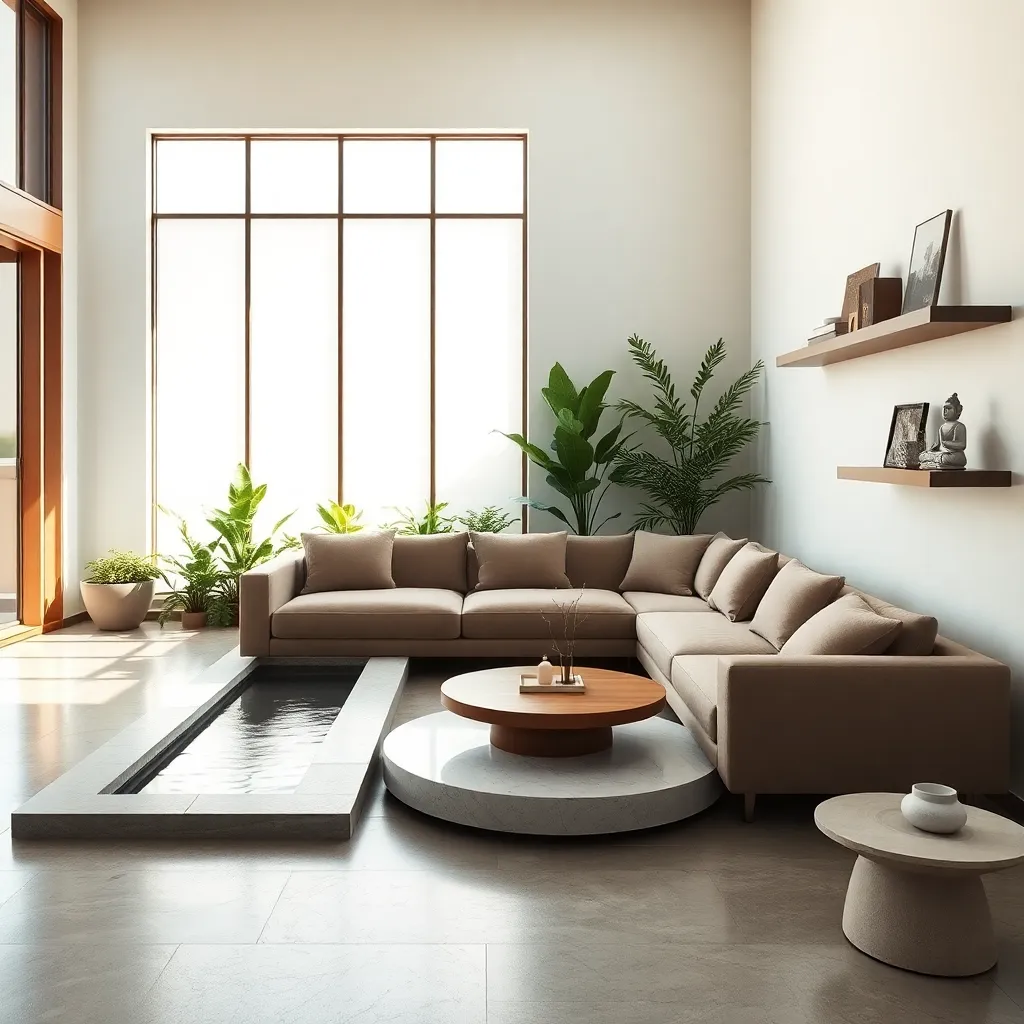
Introducing water features into your home can significantly enhance the flow of energy, promoting tranquility and prosperity. Begin with a small tabletop fountain or a mini waterfall in the entryway to invite positive energy as you step inside.
For those with more space, consider a larger water feature, such as a wall-mounted waterfall in the living room. Ensure it is positioned to face the interior of the home, symbolizing the flow of abundance and good fortune into your life.
When selecting materials, opt for natural stones like slate or river rock to create an earthy, harmonious vibe. For a touch of elegance, combine these with glass or polished metal elements, offering a balance of textures and a modern aesthetic.
Color plays a crucial role in integrating water features mindfully. Choose calming hues like blues and greens for the surroundings to amplify the serene effect of water and enhance the overall ambiance.
Create Cozy, Inviting Spaces
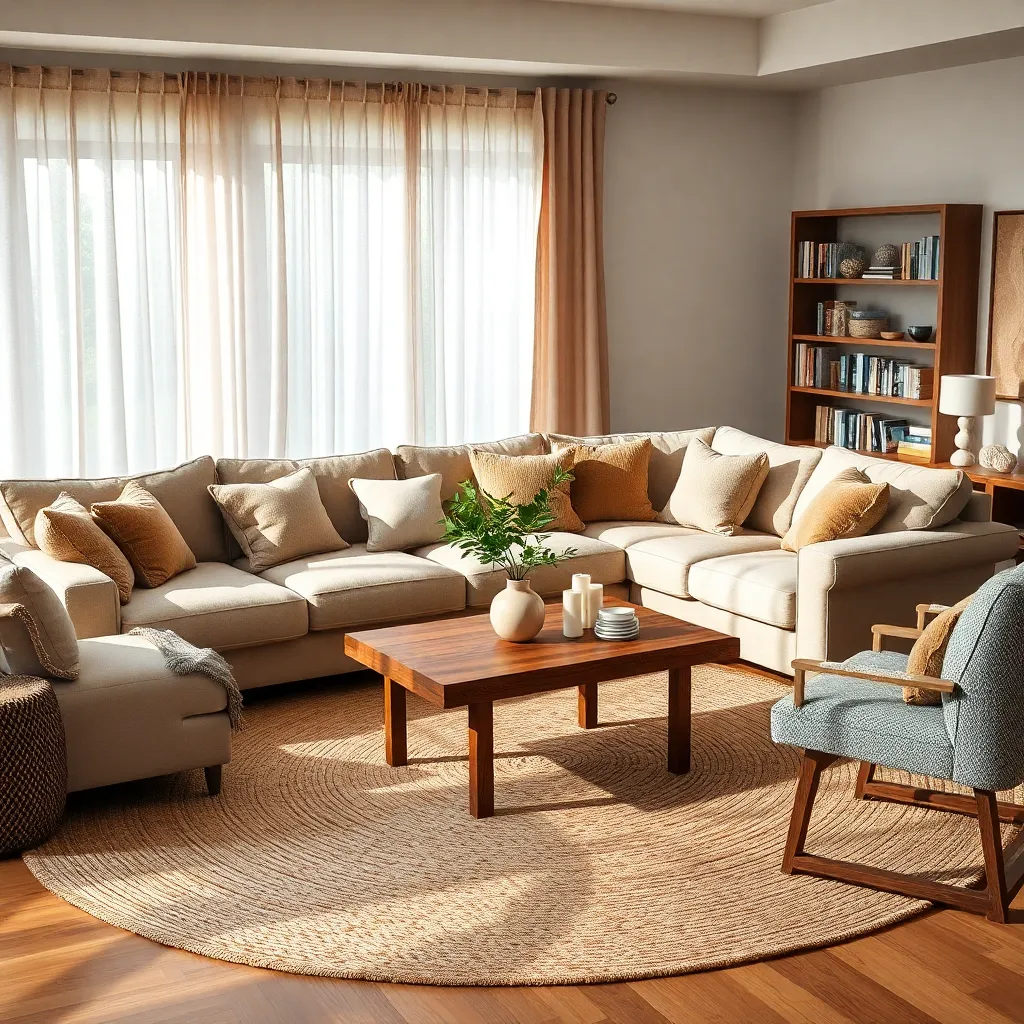
Creating a cozy, inviting space begins with selecting the right furniture that encourages relaxation and conversation. Choose plush, comfortable seating options like overstuffed sofas or padded armchairs, ensuring they are arranged in a way that fosters easy interaction and flow.
Lighting plays a crucial role in setting a warm ambiance, so opt for a mix of soft, layered lighting solutions. Incorporate table lamps, floor lamps, and dimmable overhead fixtures to create versatile lighting options that can be adjusted to suit different moods and activities.
Color schemes should evoke warmth and tranquility, making use of soft, earthy tones or warm neutrals. Consider accent walls in shades like terracotta, taupe, or sage green to add depth and interest without overwhelming the senses.
Textiles are another vital component in crafting a welcoming environment. Layer cozy throws and textured pillows on sofas and chairs, and opt for plush area rugs that not only add comfort underfoot but also help define spaces within larger rooms.
Choose Art that Inspires Positivity
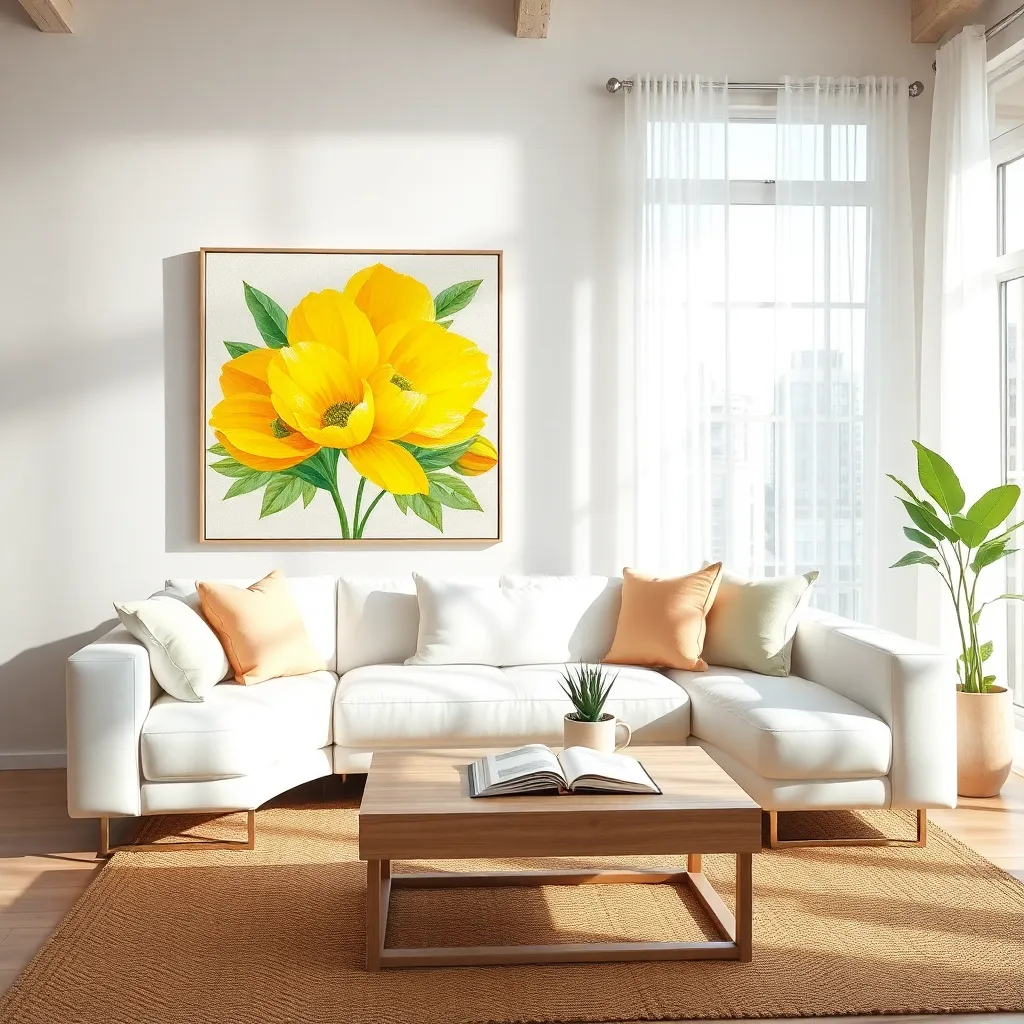
Artwork has the power to transform the energy of a room, making it essential to choose pieces that inspire positivity. Start by selecting art that resonates with themes of joy, tranquility, or inspiration, such as vibrant landscapes or abstract pieces in warm tones that evoke a sense of calm.
Consider the placement of artwork to enhance its impact on the space. Position art at eye level in areas where you spend the most time, like the living room or office, to ensure it remains a focal point that uplifts your mood throughout the day.
Incorporating art with positive symbolism can subtly influence the ambiance of your home. Look for symbols like flowing water or trees, which represent growth and vitality, to encourage a nurturing environment that supports well-being.
For those seeking a more advanced approach, create a gallery wall that mixes different styles and sizes of art to cultivate a dynamic and inspiring display. Use a consistent color palette or frame style to maintain cohesion, ensuring the arrangement feels intentional and harmonious within the room.
Optimize Bedroom for Rest
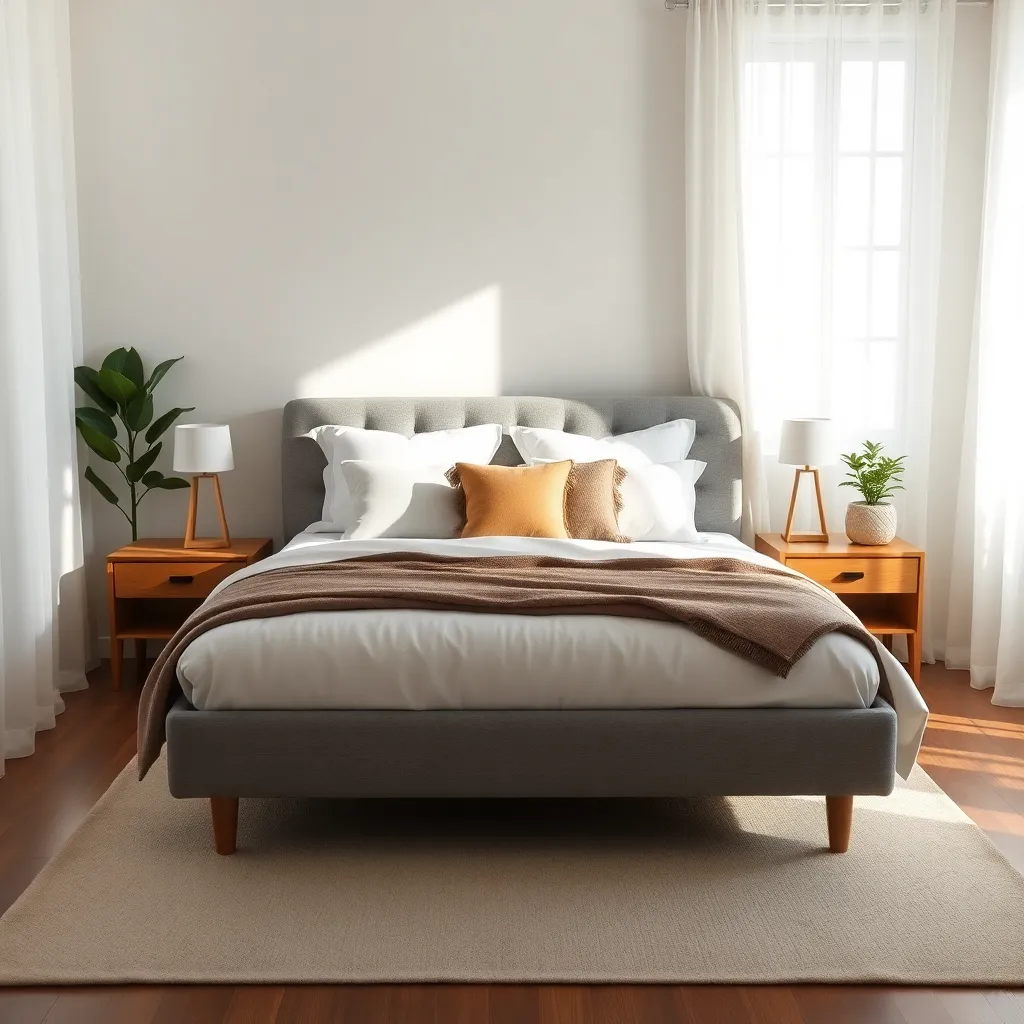
Creating a restful environment in the bedroom begins with choosing a calming color palette. Soft hues like light blues, gentle greens, or muted grays promote tranquility and ease the mind, making them ideal choices for walls and textiles.
Furniture arrangement plays a critical role in optimizing rest. Position the bed where you can see the door without being directly in line with it, a principle known as the commanding position in Feng Shui, which is believed to provide a sense of security and control.
To further enhance relaxation, focus on clutter-free surfaces. Keep bedside tables clear of unnecessary items, instead opting for a single lamp, a good book, and perhaps a small plant to maintain a sense of calm and order.
Incorporate elements of nature to naturally soothe the senses. Consider adding a few indoor plants such as lavender or jasmine, which not only improve air quality but also offer a gentle fragrance that can help ease you into sleep.
Ensure Kitchen Layout Efficiency
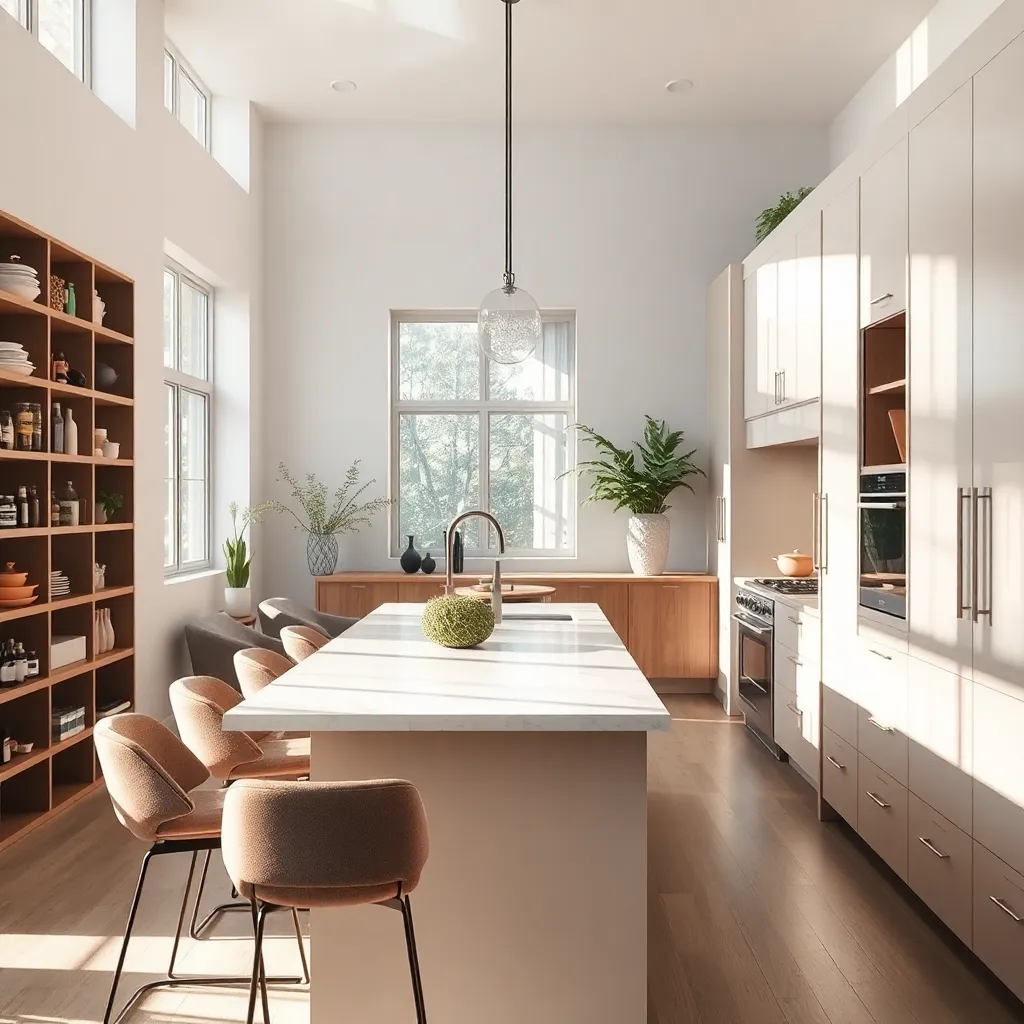
To ensure your kitchen layout is efficient, start by considering the classic work triangle, which connects the sink, stove, and refrigerator. This arrangement minimizes unnecessary movement and makes cooking tasks seamless, saving you both time and effort.
Choose multifunctional furniture to maximize space and utility within your kitchen. For instance, an island with built-in storage can serve as both a prep area and a casual dining spot, making the most of your available space.
Color choice in the kitchen can significantly affect efficiency and mood. Opt for light, neutral tones like whites or soft grays to create a sense of openness, or incorporate vibrant hues through accessories to energize the space.
For those with more advanced skills, integrating smart storage solutions can revolutionize your kitchen’s functionality. Consider installing pull-out shelves or vertical dividers in cabinets to keep everything organized and within easy reach.
Conclusion: Growing Success with These Plants
As you embark on your journey to harmonize your home and enhance your relationship, these 12 dreamy Feng Shui tips offer a roadmap to cultivate love and connection. From balancing energy with strategic furniture placement to inviting positivity through the use of color and light, each concept—like clearing clutter, nurturing the bedroom sanctuary, and incorporating natural elements—serves as a cornerstone for building a nurturing environment. By integrating symbols of togetherness and ensuring the flow of energy supports open communication, you’re not just decorating a space, but fostering a relationship haven.
To begin, choose one area of your home to apply these principles today, perhaps starting with creating a serene bedroom retreat or introducing a touch of nature. Take this small step to witness the ripple effect it can have on your relationship.
Remember to save this article for future reference as a touchstone for continual improvement. As you weave these Feng Shui tips into your home, you’re laying the foundation for lasting relationship success, where every change contributes to a deeper connection. Embrace this opportunity to transform your space and nurture the love that resides within it.
